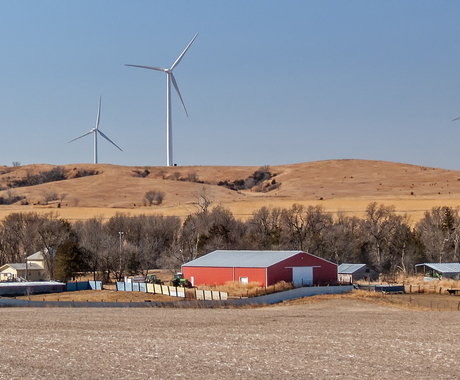By Nick Summers, former staff member
A recent report issued by the Intergovernmental Panel on Climate Change (IPCC) reaffirms the importance of climate action in rural communities, calling on those communities to adapt to and mitigate climate impacts to preserve their own prosperity and protect food and energy security globally.
The report takes a comprehensive look at the specific vulnerabilities of systems and communities and identifies pathways for adaptation and mitigation.
The report makes it clear that many of the extreme weather patterns in recent years, such as excessive flooding, drought, heat waves, and winter storms, are a result of or worsened by changes in the climate caused by increased greenhouse gas emissions. To curtail increased warming, the IPCC says immediate emissions cuts across multiple sectors, including transportation, energy, industry, and agriculture, are necessary. Without strengthening policies beyond what currently exists, these drastic cuts are not likely to occur, and the destructive weather patterns will worsen and occur with increasing frequency.
Extreme weather events have direct consequences for rural communities. Flooding has damaged communities across the U.S., creating negative outcomes for human health, infrastructure, energy systems, and food and water security. In the spring of 2019, Nebraska experienced catastrophic flooding that impacted three-fourths of Nebraska’s 93 counties. Damages were estimated to be more than $1.3 billion, including $439 million to roads and bridges, $440 million in crop losses, $400 million in cow-calf losses, and $85 million in private and residential property damage.
High temperatures, severe flooding, and storm damage also increase energy demand, straining current systems. The Midwest derecho and tornado outbreak in December of 2021 caused an estimated $1.8 billion in damages across Kansas, Nebraska, Iowa, Minnesota, and Wisconsin. The Center for Rural Affairs supports efforts to develop renewable energy systems and a more decentralized energy grid, which is more resilient in the face of the extreme weather patterns.
Changing climate can also impact agriculture
A warmer climate is likely to alter the ranges of pests and diseases, the timing of pollinators and the plants they rely on, and reduce livestock and crop productivity. According to the report, across North America, climate change has generally reduced agricultural productivity by 12.5% since 1961. Long lasting droughts have put a strain on the operations of many farmers, and heat waves have made managing livestock and harvesting crops difficult and dangerous for many rural workers. The 2012 Midwest and Great Plains drought, which is partially attributable to climate change, cost the industry $30 billion.
Conservation practices, such as the usage of cover crops, no till, rotational grazing, prairie strips, wetlands, riparian buffers, and the integration of livestock and cropping, all work toward mitigating and adapting to climate change. These conservation practices improve soil health and its ability to sequester carbon and reduce greenhouse gas emissions, as well as build soil organic matter, which improves the soil’s ability to hold water and mitigates the effects of drought.
Additionally, ground cover helps ensure soil is not lost to erosion during heavy rain events, and thereby improves water quality by reducing runoff. Conservation practices also increase on-farm biodiversity, which benefits pollination, pest control, nutrient cycling, water regulation and soil fertility, which may reduce the need for synthetic fertilizers.
Rural communities must prepare to adapt to and mitigate climate change, ensuring that necessities such as food and energy supplies remain reliable, and that vibrant rural communities will continue to exist for generations.





